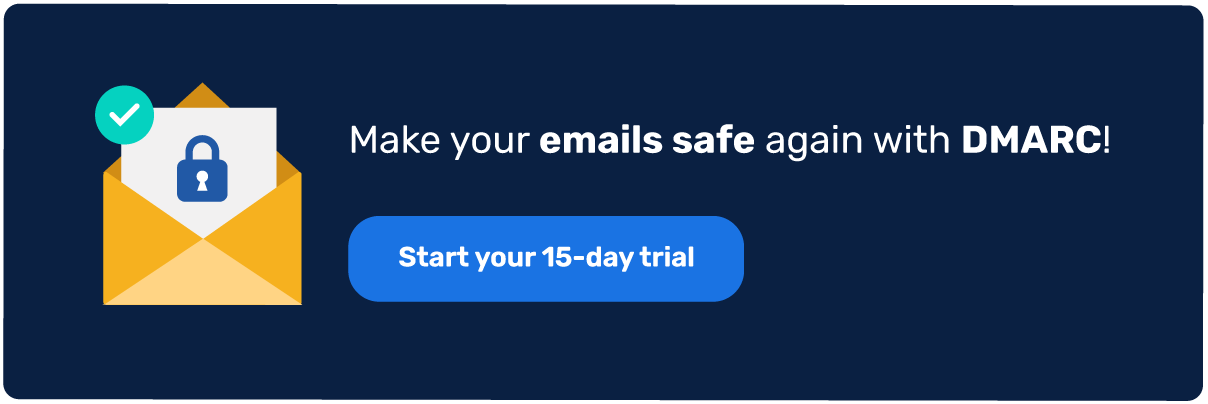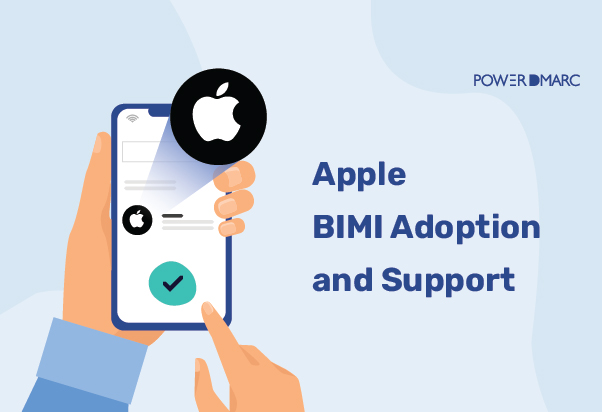In recent news, Apple BIMI adoption was announced in their new iOS update, pushing email service providers to further extend their adoption rate of the new email authentication + marketing tool that has become the talk of the town: Brand Indicators for Message Identification.
Key Takeaways
- BIMI allows organizations to display their brand logo in recipient inboxes, enhancing brand recognition.
- Increased DMARC adoption will improve protection against impersonation and phishing attacks.
- Implementing BIMI can lead to better email deliverability and higher engagement rates.
- The adoption of Verified Marked Certificates (VMC) is expected to rise among organizations using BIMI.
- PowerDMARC’s hosted services simplify the BIMI implementation process for domain owners.
Why did Apple announce BIMI Support?
It’s simple, BIMI is the future of authentication and marketing. BIMI allows organizations to display their brand logo on emails they send to their clients, making them instantly recognizable in the receiver’s inbox. The implementation and adoption process makes it mandatory for domains to have a DMARC record in place which is also an indication that the authenticity of the domain name has been verified before it reaches the recipient.
Apple’s support for BIMI has been long anticipated and expected, especially since Google rolled out BIMI adoption in 2021.
The BIMI adoption rollout will enter the market for all Apple email users with iOS 16 & macOS Ventura.
Simplify Security with PowerDMARC!
How will Apple’s support for BIMI benefit your business?
If you are an Apple email client, here are some key takeaways for your business:
- BIMI adoption in Apple will allow you to display your brand logo in the inboxes of your receivers, automatically increasing brand awareness and recall
- Subsequently increased DMARC adoption will protect your domain against impersonation, phishing, and spoofing attacks
- Noticeable improvement in email deliverability and email engagement rates
- A steep rise in VMC adoption rate among organizations
Apple’s adoption of BIMI will not only allow Apple email clients to enjoy a safer and authenticated email experience but will also greatly benefit their email marketing campaigns with increased user engagement.
How to prepare yourself for the Apple BIMI Adoption Rollout? – BIMI Requirements and Prerequisites
To have a smooth transition to BIMI, you need to get the following in place:
- A valid DMARC record published on your DNS
- A BIMI logo in SVG Tiny 1.2
- A Verified Marked Certificate (optional but recommended) to authenticate your domain as the owner of the logo
Once these are in place, here are a few questions that can come to your mind:
What does BIMI do?
BIMI appends your brand logo to outgoing messages so that it can be displayed in your receiver’s inbox. Usually, when a message is sent via email service providers like GMAIL, the first alphabet of the sender’s email address is reflected as the logo. This can be avoided with BIMI, thereby giving a more professional look to emails, which is excellent for marketing purposes.
How do I implement the BIMI protocol?
You can implement BIMI through a reliable and efficient hosted BIMI service like PowerBIMI. We help you get your domain ready for adoption and implementation and take you through the steps of configuration by managing most of the work in the background with only a few DNS changes required from your side. Along with this, you get full access to a SaaS platform to manage, edit, and monitor your protocols with ease.
While typically BIMI implementations may take time due to a lot of factors that need to be taken into account, hosted services can reduce and distribute workload through outsourcing and make implementation much faster for domain owners.
Apart from Apple, which other major email providers support BIMI?
The following inbox providers currently support BIMI:
- Yahoo (excluding Yahoo Japan)
- AOL
- Netscape
- Gmail
- Google Workspace
- Fastmail
- Pobox
Note: This is an incomplete list. The rate of adoption is increasing every year with new additions pushing towards support and implementation of email authentication standards for safer email communication.
How do we make your Apple BIMI implementation easier?
PowerDMARC’s hosted BIMI services make it easier for domain owners to integrate BIMI with their existing email systems and make a smooth transition to branded emails. We help you:
- Create an error-free BIMI record
- Upload a BIMI-compliant logo
- Effectively display your logo on outgoing emails
- Test the health of your record and troubleshoot errors
Sign up today to get your free trial!

- Best Domain Security Management Solutions to Protect Your Digital Identity - August 29, 2025
- Microsoft Limits Onmicrosoft Domain Usage for Email Sending - August 25, 2025
- Zero Day Vulnerability: Examples, Detection, and Prevention - August 25, 2025



